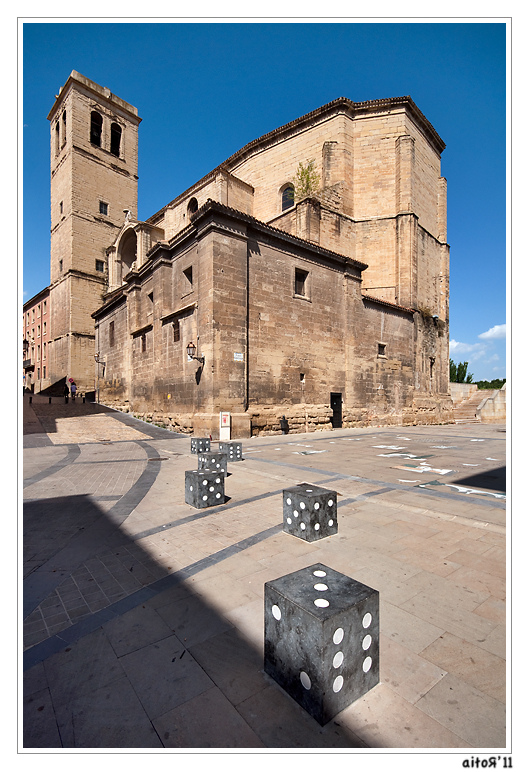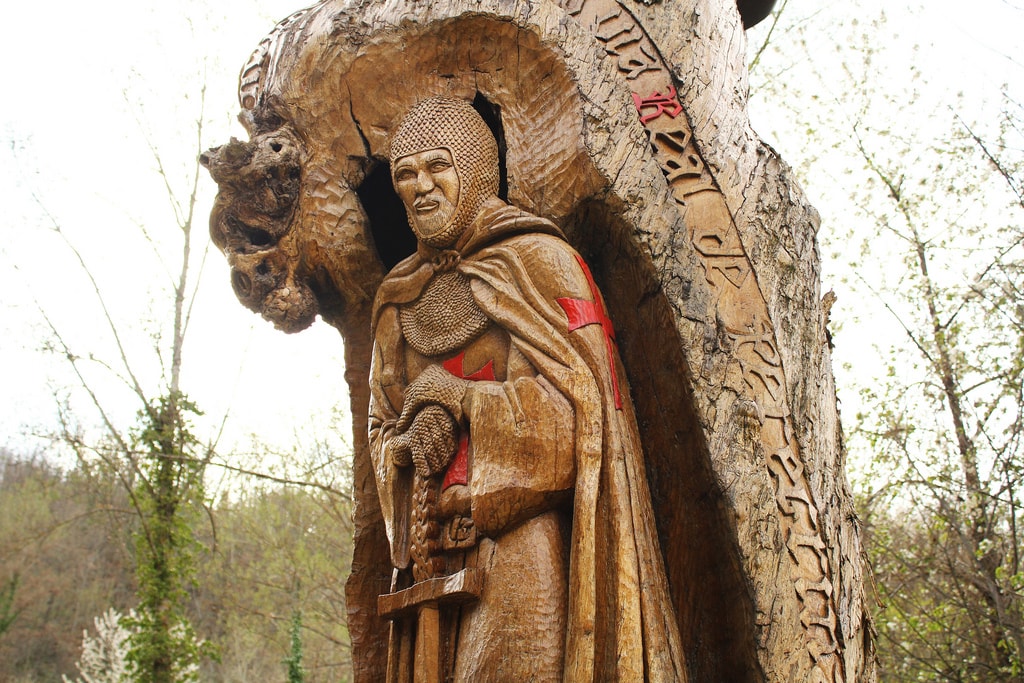거위 놀이와 산티아고 순례길
Xavier Rodríguez Prieto로그로뇨는 스페인 북부에 위치한 라 리오하 자치 공동체의 정치, 경제, 문화의 수도입니다. 이 지역은 특히 포도밭과 원산지 보호 명칭을 가진 와인으로 유명합니다.
이 도시는 문화 생활과 미식의 다양성을 제공합니다 – 아마도 이미 에스텔라에서 로그로뇨까지의 단계를 읽었다면 알고 있을 것입니다 – 그리고 이곳을 통해 프랑스 길이 지나갑니다. 산티아고 순례길은 로그로뇨의 상징적인 돌다리를 통해 도시로 들어가며, 스페인에서 가장 큰 강인 에브로 강의 물을 건너 역사적 중심지로 내려갑니다.
도시를 지나는 길에서 산티아고 순례길은 예상대로 산티아고 교회를 지나갑니다. 이 사원은 사도 산티아고의 이름을 따서 지어졌으며, 그가 교회가 지어진 장소에서 설교했다고 전해집니다. 성소 앞에는 오늘 투른라이드에서 여러분과 공유하고 싶은 흥미로운 점이 있습니다: 라 플라자 데 라 오카, ‘거위 광장’, 거위 놀이를 상징합니다.
산티아고 광장과 그 거위 놀이
산티아고 광장 – ‘산티아고 광장’ – 또는 일반적으로 알려진 이름인 라 플라자 데 라 오카 – ‘거위 광장’ – 에서 우리는 거위 놀이를 대규모로 표현한 큰 모자이크를 발견할 수 있습니다. 하지만 먼저 하나를 명확히 해야 합니다. 거위 놀이란 무엇일까요?
이것은 플레이어가 주사위를 굴려 보드를 통해 이동해야 하는 보드 게임입니다. 이 보드는 나선형을 취하며 63개의 다른 그림이 있는 칸으로 구성되어 있습니다 – 그 중 게임 전반에 걸쳐 여러 번 나타나는 거위가 있습니다 -. 어떤 칸에 떨어지느냐에 따라 앞으로 이동할 수 있거나, 아니면 차례를 잃거나 심지어 처음 칸으로 돌아가야 할 수도 있습니다.
그러나 이 광장에서 발견하는 것은 63개의 칸으로 구성된 일반적인 게임 보드가 아니라, 우물과 미로 그림이 가득한 보드가 아니라, 거위와 주사위와 함께 순례길의 다양한 단계를 나타내는 다른 그림을 찾을 수 있습니다: 부르고스, 사아군, 레온, 폰페라다, 멜리데… 등.
이 게임은 로그로뇨에서 시작하여 사도 산티아고의 무덤에서 끝납니다. 각 칸은 프랑스 길의 많은 정거장을 묘사합니다. 그 안에서 우리는 또한 순례자가 길을 따라 발견할 더 중요한 기념물의 그림을 찾을 수 있습니다. 원래 거위 놀이의 익명의 다리는 여기서 나바라의 푸엔테 라 레이나와 레온 주의 푸엔테 오르비고로 변합니다. 미로, 항상 우리의 차례를 잃게 만든 칸은 여기서 레온의 라스 메둘라스로 표현됩니다.
이 광장은 150평방미터의 광장으로, 1991년에 리모델링되었으며 그 해에 거위 놀이가 추가되었습니다. 순례자들이 걸어 다닐 수 있는 바닥의 보드는 주사위 모양의 벤치와 순례자 분수가 함께 있습니다. 이 독특한 장소는 산티아고 교회와 함께 프랑스 길의 통과 장소이며, 특히 흥미롭고 독창적인 장소입니다.
거위 놀이의 기원: 성전 기사단과 산티아고 순례길
거위 놀이의 기원에 대해 여러 가지 이론이 있습니다. 그 중 일부는 그 기원을 고대 그리스와 파이스토스 원반으로 거슬러 올라갑니다. 다른 사람들은 메디치 시대의 이탈리아 피렌체에서 그 창작을 위치시키는 것을 선호합니다.
그러나 이 이론 중 하나는 12세기에 성전 기사단이 이 게임을 창작했으며, 산티아고 순례길을 영감의 원천으로 삼았다고 주장합니다. 이 게임의 보드는 신비로운 코드 뒤에 성전 기사단의 지식을 숨긴 신비로운 모티프로 가득 차 있다고 합니다..
다른 사람들은 보드가 단순히 성전 기사단이 만든 순례 경로의 가이드라고 믿습니다. 로그로뇨에서 순례길을 시작하여 모든 단계를 거쳐 최종적으로 산티아고 데 콤포스텔라에 도달합니다. 성전 기사단은 체스와 같은 보드 게임을 하는 것을 금지했기 때문에, 이 게임의 초기 목적이 아직 기사단에 입단하지 않은 사람들을 위한 순례 가이드로 맞춤화된 게임이었을 가능성이 있습니다.
이를 염두에 두면, 거위 놀이의 보드는 순례자들에게 메타포로 작용하여, 내부와 외부의 탐구에 전념하는 플레이어처럼, 순례길의 장애물을 극복하고 목표에 도달할 수 있습니다.
이 신비로운 게임의 진정한 기원에 관계없이, 거위 광장은 로그로뇨에 도착하는 모든 순례자의 시간을 잡아끌기에 충분한 흥미로운 장소입니다. 따라서 여러분의 일정이 라 리오하를 통과한다면, 이 인상적인 광장에 멈춰 서는 것을 추천합니다.”
여기서 이 글을 마치지만, 게임의 마지막 칸에 도달하고 싶다면, 순례길을 위한 자전거를 제공해 드리겠습니다.


